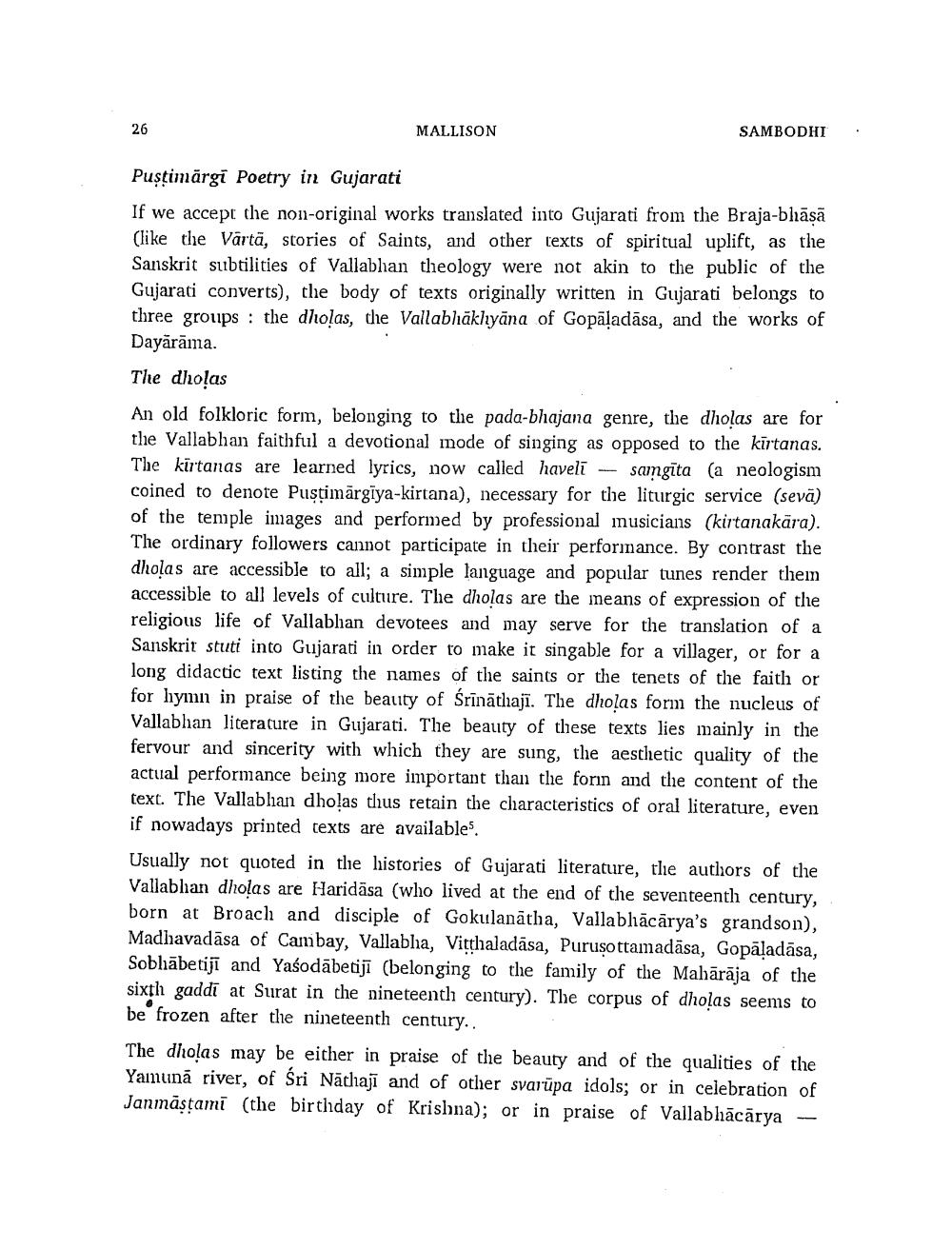________________
26
MALLISON
SAMBODHI
Puştimārgi Poetry in Gujarati If we accept the non-original works translated into Gujarati from the Braja-bhāsā (like the Vārtā, stories of Saints, and other texts of spiritual uplift, as the Sanskrit subtilities of Vallabhan theology were not akin to the public of the Gujarati converts), the body of texts originally written in Gujarati belongs to three groups: the dholas, the Vallabhākhyāna of Gopāladāsa, and the works of Dayārāma. The dholas An old folkloric form, belonging to the pada-bhajana genre, the dholas are for the Vallabhan faithful a devotional mode of singing as opposed to the kirtanas. The kirtanas are learned lyrics, now called havelī - samgīta (a neologism coined to denote Pustimārgiya-kirtana), necessary for the liturgic service (sevā) of the temple images and performed by professional musicians (kirtanakāra). The ordinary followers cannot participate in their performance. By contrast the dholas are accessible to all; a simple language and popular tunes render them accessible to all levels of culture. The dholas are the means of expression of the religious life of Vallabhan devotees and may serve for the translation of a Sanskrit stuti into Gujarati in order to make it singable for a villager, or for a long didactic text listing the names of the saints or the tenets of the faith or for hymn in praise of the beauty of Śrīnāthajī. The dholas form the nucleus of Vallabhan literature in Gujarati. The beauty of these texts lies mainly in the fervour and sincerity with which they are sung, the aesthetic quality of the actual performance being more important than the forn and the content of the text. The Vallabhan dholas thus retain the characteristics of oral literature, even if nowadays printed texts are available.
Usually not quoted in the histories of Gujarati literature, the authors of the Vallabhan dholas are Haridasa (who lived at the end of the seventeenth century, born at Broach and disciple of Gokulanātha, Vallabhācārya's grandson), Madhavadāsa of Cambay, Vallabha, Vitthaladāsa, Purusottamadāsa, Gopāladāsa, Sobhābetiji and Yaśodābetiji (belonging to the family of the Mahārāja of the sixth gaddi at Surat in the nineteenth century). The corpus of dholas seems to be frozen after the nineteenth century. The dholas may be either in praise of the beauty and of the qualities of the Yamunā river, of Śri Näthajī and of other svarūpa idols; or in celebration of Janmastami (the birthday of Krishna); or in praise of Vallabhācārya -




